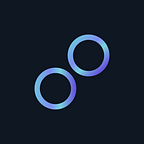Misinformation: curated resources for discerning consumers of content
We’ve become more discerning consumers in many ways; we have learnt how to read food labels, check how something is made and where it’s coming from. Clearly, we care about what goes into the food we consume. But what about the information we consume? Do we know what’s going into it and where it’s coming from? And how do we learn the tools to assess the quality, reliability, and provenance of a piece of information before making a decision about how to interpret it? Here’s a curated list of resources to help you become a more discerning consumer of information.
Understand the problem
A common complaint about misinformation is, ’people just don’t know the facts and will believe anything.’ That’s an oversimplification of why misinformation exists and spreads — and a dangerous oversimplification, at that. Learn why fake news spreads and how it works. Four Hard Truths about Fake News by Alexandra Juhasz | Symbolic Convergence Theory by CCIL
Spend a bit of time on education and awareness
Many of us have made it a point to educate ourselves about nutrition, fitness, and other things that really matter to us. But when it comes to media literacy, the assumption is that we simply know what we like to read and watch, and don’t really have a lot of new things to learn about it. But fighting fake news isn’t about what we read, but how we read. Crash Course Media Literacy Series, run by the great people at Crash Course
Become a more responsible content creator
There’s a wealth of resources for writers, journalists, and content creators of almost every type. Using these resources and fact checkers can make a huge difference to the relationship you have with your audiences. Tools That Fight Disinformation Online by the Rand Corporation| Fake News: A Media Literacy Reading List by JSTOR Daily
One of the biggest problems with fake news is that it’s bemoaned, complained about, and then dismissed as something that a monolithic group of ‘others’ engage in. We may see ourselves as smarter, more knowledgeable, or more educated than these ‘others’ — and may wonder what we could possibly have to learn about fake news. But how content and information is read and consumed is part of a broader, rigorous body of study that spans communication, critical thinking, cultural studies, media literacy, sociology, computing, internet studies, and so many more disciplines. It’s important to recognise that there’s a lot to learn. All we have to do as consumers is to take a little bit of effort to educate ourselves on the topic in a way that makes sense to our everyday lives and contexts.
Learn with us
